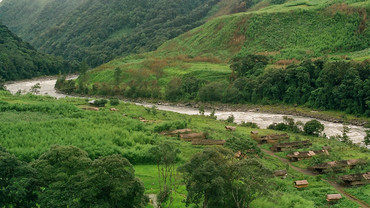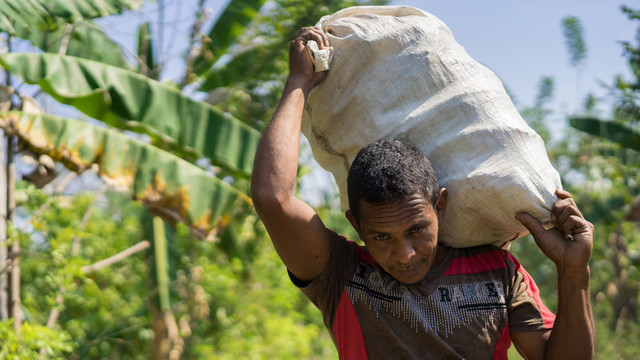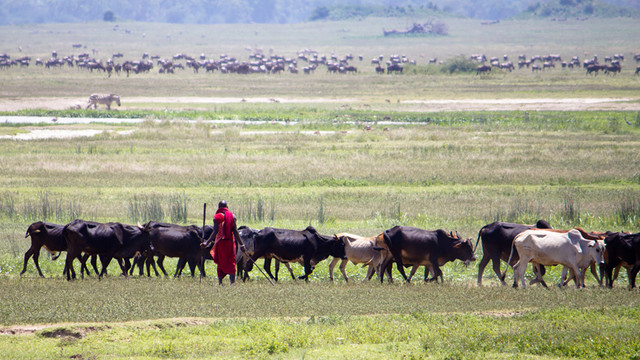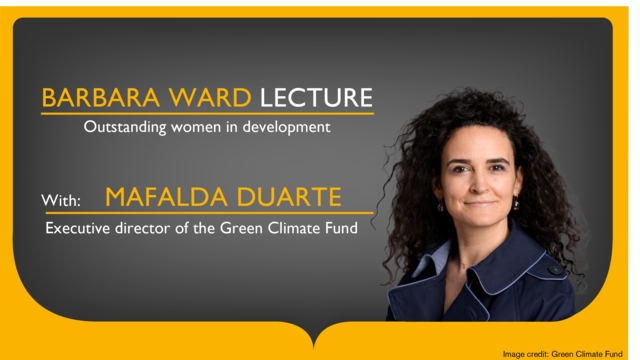Can blockchain unblock climate finance?
Funders’ perceptions that there is too much risk in investing at the local level prevents climate finance from making a real difference. Sam Greene discusses whether new technologies can benefit local communities while delivering the confidence donors and investors need to put their money where it matters.


This illustration shows Earth encircled by digital networks. New digital data storage and sharing platforms are revolutionising financial operations (Image: Chani Goering, Creative Commons via Flickr)
Climate finance is not getting to the people who need it most – vulnerable communities on the front line, hardest hit by the impacts of climate change but least able to respond. IIED estimates only 1 in 10 dollars of the US$60bn in public and private climate finance from dedicated climate funds is directly committed to local level activities.
Local communities know what works and have ingenious and sustainable solutions for adapting to climate change. But cut out of the funding picture, they have almost no say in how or where the bulk of the money is spent.
IIED is exploring the barriers stopping climate finance reaching local people. Part of this is examining emerging innovations in technology that can break those barriers. We are considering the role that blockchains, artificial intelligence, GPS satellites and advanced data platforms might play enabling finance to flow.
A risky business?
One major blockade is perceived risk: donors and investors do not have confidence in local level institutions’ (such as small business, local government authorities) financial systems, in their ability to spend money effectively and are wary of having no means of holding them to account. The distance between international and local actors makes it harder for funders to know what is happening ‘on the ground’.
Emerging technologies may help to circumvent this barrier. It’s been hard to miss the blockchain hype – decentralised ledgers that make the transfers of funds or assets between people or organisations fully transparent. Blockchains can record transactions of anything of value such as money, land, or identities, as well as assurances of impact or change delivered by an investment.
And being a decentralised system, costly intermediaries become redundant as investors, governments or communities can transfer funds or other assets directly between each other faster and at less expense.
The video below was made by the World Economic Forum to explain some of the benefits of blockchain technology.
With the potential for such a radical shake up in the transparency of transactions, could blockchains be the key to increasing funders’ appetite for climate finance investments?
Blockchains in practice
Digital “smart” contracts are programmed to automatically trigger payments when certain conditions are met.
Gainforest is using smart contracts to incentivise small-scale Amazonian farmers to preserve the rainforest. Farmer ’caretakers’ receive rewards for preserving patches of rainforest over a 3-6 month period. The reward is crowdfunded by private individuals or institutional donors and the size is determined by the difficulty in preserving the particular area of land.
When remote sensing satellites verify a particular patch of forest is still standing, the smart contracts enable payments to be sent automatically to the farmers. Since satellites independently verify the status of different patches, these transactions are significantly more transparent and can be trusted by donors. And with no ’middle-men’ transferring funds, administrative costs are cut dramatically.
Bitland in Ghana is using blockchain technology to create an immutable, transparent record of land ownership using drones, remote sensing and field-level research to enhance the data. Clear, public records of who owns what can help tackle corruption, illegal land grabbing and costly local border disputes that thrive on poor data and incomplete or unavailable written records.
Clear records of ownership can transform local peoples’ access to finance – as they can prove ownership of their land and secure credit by borrowing against it.
Risks and challenges
However, there are challenges – such as the significant energy needed to maintain blockchains. Accessibility is also an issue: all users must have reliable internet access and enough technological literacy to access and review blockchain data.
There are also risks. Since the distributed ledger is transparent and immutable, its value rests on the quality of data that populates it. And the choices of information put onto ledgers, or the conditions set for smart contracts are highly political. Blockchains may entrench uneven power dynamics between donors and recipients.
If smart contract conditions are set by donors, the needs of the recipient risk being overlooked. Can this power dynamic be shifted to a model where both donor and recipient ‘own’ the conditions, enabling both groups to hold each other to account? How can we ensure that these kinds of contracts preserve trust within and between communities?
Exploring the barriers to local-level climate finance
Blockchain technology is still an unknown quantity and a wave of local-level investment is unlikely until the various obstacles are addressed. These include:
- High energy demands to power blockchains
- The potential for blockchains to become cumbersome as more users and data is added
- Issues of fairness, recognising that the most vulnerable will only benefit if they have internet access and user-friendly, local language platforms to review ledger data, and
- A skewed power dynamic where investors and donors set smart contract conditions that may not reflect local priorities.
At a workshop in early July, we’ll be bringing together donors, investors, innovators and community funds to explore the potential of Blockchain and other new technologies, and whether these new platforms can help tackle perceived risk in local level climate finance investments.
About the author




